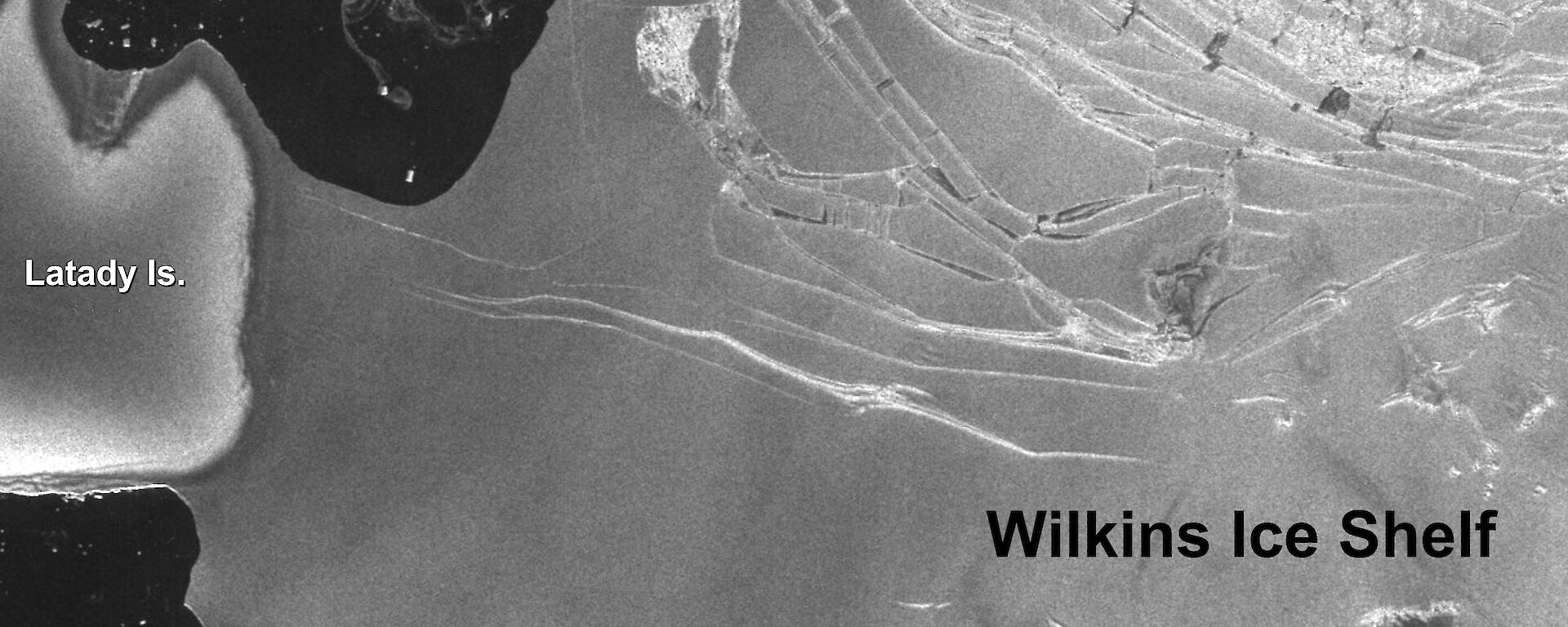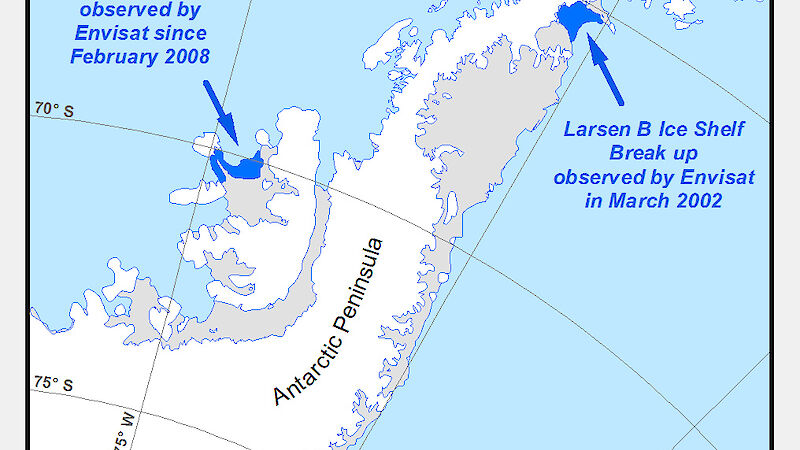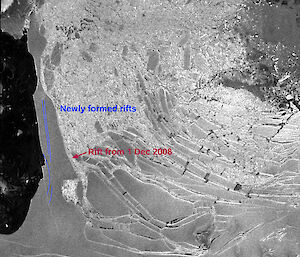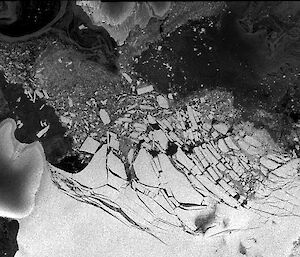The Wilkins Ice Shelf, situated on the south-western flank of the Antarctic Peninsula (at about 70.25°S, 73,0°W) and named after the Australian aviator Sir Hubert Wilkins, is at risk of further rapid collapse, after a thin ice bridge holding it back shattered. The beginning of the demise of this 40km-long feature, which connects Charcot and Latady islands, began in early April 2009, when satellite images revealed that new rifts forming along its centre axis resulted in a large block of ice breaking away.
Advanced Synthetic Aperture Radar (ASAR) images acquired on 2 April by the European Space Agency’s Envisat satellite, showed that the rifts lengthened quickly along the ice bridge. Further ASAR images on 4 and 5 April showed that the bridge had broken up, adding about 330km2 of ice to the many pieces already in the embayment in front of the shelf (from previous calving events). As this article went to press, an image acqired on 18 May 2009 showed that the ice bridge had completely disappeared and that the existing fractures (rifts) along the northern front of the remaining section of the ice shelf were widenting and new rifts were forming.
The Wilkins Ice Shelf has undergone significant changes since 2008, losing some 1800km2 of ice (about 14% of its size) up to the point where the ice bridge shattered, and after two significant calving events in February and May 2008 and further losses in June and July. These changes have been attributed to strong regional warming, and melting of the ice shelves from below. These events were reported in Australian Antarctic Magazine 14: 22–23, (2008).
Scientists warn that the ice bridge break up is the beginning of the next phase of the ice shelf disintegration, whereby thousands of square kilometres of ice that was, up ntil now, held behind the bridge, could now be released. Dr Ted Scambos of the US National Snow and Ice Data Center believes that such a collapse may not stop until at least half of the remaining ice shelf area is lost. Indeed, numerous icebergs have begun to calve from the northern front of the ice shelf, indicating that it is currently unstable.
This is the latest in a series of ‘runaway disintegrations’ of ice shelves along the Antarctic Peninsula, starting with the demise of Larsen A in 1995 and followed by the Larsen B in 2002. It is notable in that the Wilkins Ice Shelf is the most southerly and the largest Antarctic ice shelf to be affected to date.
ROB MASSOM1,2 , NEAL YOUNG1,2 and WENDY PYPER1
AAD1 and ACE CRC2





